Description
The Nymphaeum of the Villa di Papa Giulio, Rome by Hubert Robert printed on a Hoodie
Over the course of his eleven year stay in Rome, from 1754 to 1765, Hubert Robert made several drawings of the Villa Giulia built in 1551-1553, following the designs of Giacomo Barozzi da Vignola (1507-1573). To enhance the beauty of the place, Pope Julius III commissioned the sculptor Bartolomeo Ammannati (1511-1592) to design the Nymphaeum and garden structures, which are renowned today as examples of Mannerist architecture in Rome. The first known view of the villa by Robert is a red chalk drawing dated 1758: the Colonnaded Courtyard of the villa Giulia (Boston, the Horvitz collection, D-F-745. See exh. cat., Hubert Robert, Washington, 2016, p.15, fig.4). The following year, Hubert Robert made five drawings representing the hay barn of the former villa (Musée des beaux-arts de Valence, D. 93 ; Saint-Petersburg, Hermitage Museum, 7662 ; Moscow, Pushkin Museum, 1071 ; Paris, Musée des Arts décoratifs, PE 57 ; private collection, see exh. cat. Washington, 2016, no. 9). In 1762, the young student depicted the villa’s courtyard with a spectacular view of the semi-circular colonnade in a red chalk drawing dated 1762 (Valence, Musée des beaux-arts, inv. D. 70) and a watercolor dated 1763 (Vienna, Albertina, 12430. See Catherine Boulot in exh. cat. JH Fragonard e H Robert a Roma, Rome, 1990-1991, n° 121) as well as a riccordo sketch (New York, the Pierpont Morgan Library & Museum, 1958.5 folio 12 recto. See Sarah Catala in exh. cat. Hubert Robert, Paris, 2016, no. 20, p. 161).
Our drawing is the only known view of the Nymphaeum. Ammanati’s creation is a complex combination of a hemispherical façade and a three-leveled structure with loggias and caryatids on the ground floor. Hubert Robert was not attracted to the architecture of the two façades but, rather, to the faded beauty of the abandoned villa, transformed by the invasion of unkempt foliage and bales of hay ignobly stored at the base of the caryatids. With architecture and figures alike treated in a very broad and free technique, Robert evokes, more than he represents, the daily life of workers and visitors to the site.
The date of this drawing was never thoroughly investigated by art historians, who considered it connected to the 1759 group of drawings depicting the villa’s hay barn. However, the Met’s sheet displays all the features of drawings made by Robert in 1761. The use of red chalk contributes to the rapid handling of this drawing, probably made in about twenty minutes. Sitting, it appears, on the ground, he first loosely sketched in the architectural elements, before adding areas of tone with broad hatchings. Despite the speed with which he worked, he was able to create contrasts between the shadows and the light coming from the upper right by leaving areas of paper in reserve (untouched) and by darkening portions of the foreground. Here, the application of red chalk plays with the texture of the paper to create mid-tone shadows around the caryatids and the reflections on the water. The background features a cadenced pattern of dark and light, with shadowy open doorways alternating with blind apses. The artist then took a sharpened piece of chalk to liven up his composition by adding some sketched figures, reinforcing the contours of the statues, and picking out some stones and plants in the foreground. In contrast to his drawings of 1759, which typically feature homogeneous outlines and a simplified handling of light and shadow, the execution of this sheet is less precise, but more bold and confident, similar to his work of 1761, an example of which would be the counterproof dated 1761, which depicts the Villa Farnese in Rome (Besançon, bibliothèque municipale, vol. 451, no. 35. Sarah Catala, Les Hubert Robert de Besançon, 2013, no. 35). This manner is still evident in the foreground of the Study of plants, drawn in early 1762 (Valence, Musée des beaux-arts, D. 53. See Sarah Catala, exh. cat. Paris, 2016, no. 10). Like many of his red chalk drawings made in Italy, the Met’s sanguine was not turned into a painting, but was used as a rehearsal, an expression of technical dexterity and the ability to create striking views. Hubert Robert would have presumably kept it after his return to France, both as a souvenir, or memory, of Rome and to add to his repertoire of forms and motifs.
Sarah Catala (October, 2016)
About the Hoodie
Modern fit
It provides a more tailored look than a regular fit
Comfortable
The fabric and fit of this item are extra comfy
Tear-away tag
Easily removable tear-away tag that allows you to add a custom inside label
Premium quality
The product is made from premium, high-quality materials
Classic unisex hoodie with a front pouch pocket and matching flat drawstrings. The 100% cotton exterior makes this hoodie soft to the touch.
- 65% ring-spun cotton, 35% polyester
- Charcoal Heather is 60% ring-spun cotton, 40% polyester
- Carbon Grey is 55% ring-spun cotton, 45% polyester
- 100% cotton face
- Fabric weight: 8.5 oz./yd.² (288.2 g/m²)
- Front pouch pocket
- Self-fabric patch on the back
- Matching flat drawstrings
- 3-panel hood
- Tear-away tag
Hubert Robert (1733-1808)
Hubert Robert was a French painter in the school of Romanticism, noted especially for his landscape paintings and capricci, or semi-fictitious picturesque depictions of ruins in Italy and of France.
Hubert Robert was born in Paris in 1733. His father, Nicolas Robert, was in the service of François-Joseph de Choiseul, marquis de Stainville a leading diplomat from Lorraine. Young Robert finished his studies with the Jesuits at the Collège de Navarre in 1751 and entered the atelier of the sculptor Michel-Ange Slodtz who taught him design and perspective but encouraged him to turn to painting. In 1754 he left for Rome in the train of Étienne-François de Choiseul, son of his father’s employer, who had been named French ambassador and would become a Secretary of State for Foreign Affairs to Louis XV in 1758.
He spent fully eleven years in Rome, a remarkable length of time; after the young artist’s official residence at the French Academy in Rome ran out, he supported himself by works he produced for visiting connoisseurs like the abbé de Saint-Non, who took Robert to Naples in April 1760 to visit the ruins of Pompeii. The marquis de Marigny, director of the Bâtiments du Roi kept abreast of his development in correspondence with Natoire, director of the French Academy, who urged the pensionnaires to sketch out-of-doors, from nature: Robert needed no urging; drawings from his sketchbooks document his travels: Villa d’Este, Caprarola.
The contrast between the ruins of ancient Rome and the life of his time excited his keenest interest. He worked for a time in the studio of Pannini, whose influence can be seen in the Vue imaginaire de la galerie du Louvre en ruine (illustration). Robert spent his time in the company of young artists in the circle of Piranesi, whose capricci of romantically overgrown ruins influenced him so greatly that he gained the nickname Robert des ruines. The albums of sketches and drawings he assembled in Rome supplied him with motifs that he worked into paintings throughout his career.
His success on his return to Paris in 1765 was rapid: the following year he was received by the Académie royale de peinture et de sculpture, with a Roman capriccio, The Port of Rome, ornamented with different Monuments of Architecture, Ancient and Modern. Robert’s first exhibition at the Salon of 1767, consisting of thirteen paintings and a number of drawings, prompted Denis Diderot to write: “The ideas which the ruins awake in me are grand.” Robert subsequently showed work at every Salon until 1802. He was successively appointed “Designer of the King’s Gardens”, “Keeper of the King’s Pictures” and “Keeper of the Museum and Councilor to the Academy”.
Robert was arrested in October 1793, during the French Revolution. During the ten months of his detention at Sainte-Pélagie and Saint-Lazare he made many drawings, painted at least 53 canvases, and painted numerous vignettes of prison life on plates. He was freed one week after the fall of Robespierre. Robert narrowly escaped the guillotine when through error another prisoner with a similar name was guillotined in his place.
Subsequently, he was placed on the committee of five in charge of the new national museum at the Palais du Louvre.
The Revolution also resulted in the destruction of some of Robert’s work. Robert had designed the decorations for a little theatre in the new wing at the location of the current staircase Gabriel in the Palace of Versailles. Designed to seat about 500, this theatre was built from the summer of 1785 and opened in early 1786. It was intended to serve as an ordinary court theatre, replacing the Theatre of the Princes Court which was too old and too small, but was destroyed during the time of Louis Philippe. A watercolour of Robert’s design is in the National Archives in Paris.
Robert died of a stroke on 15 April 1808.

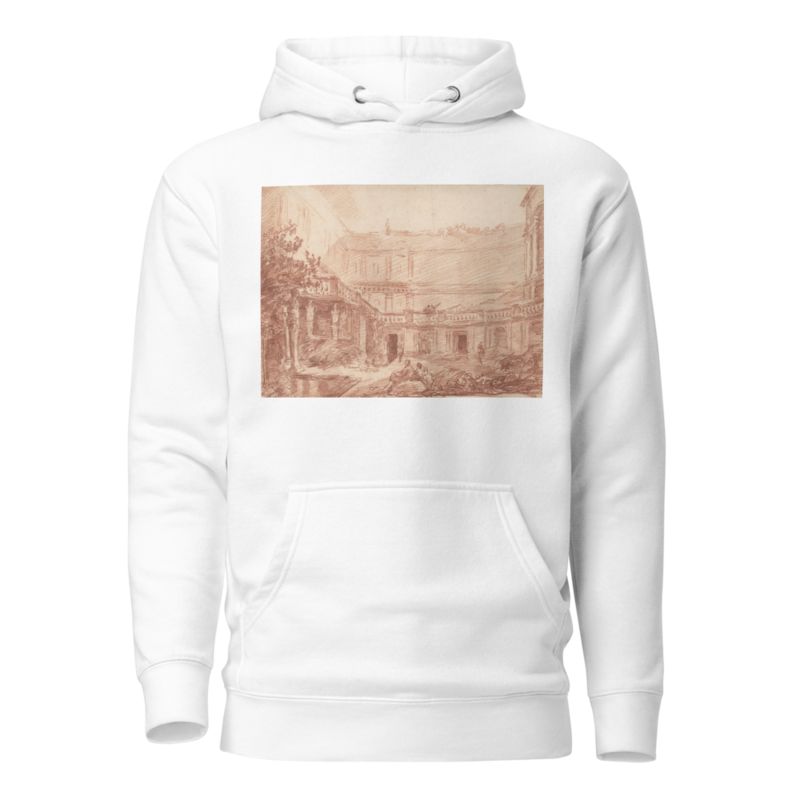
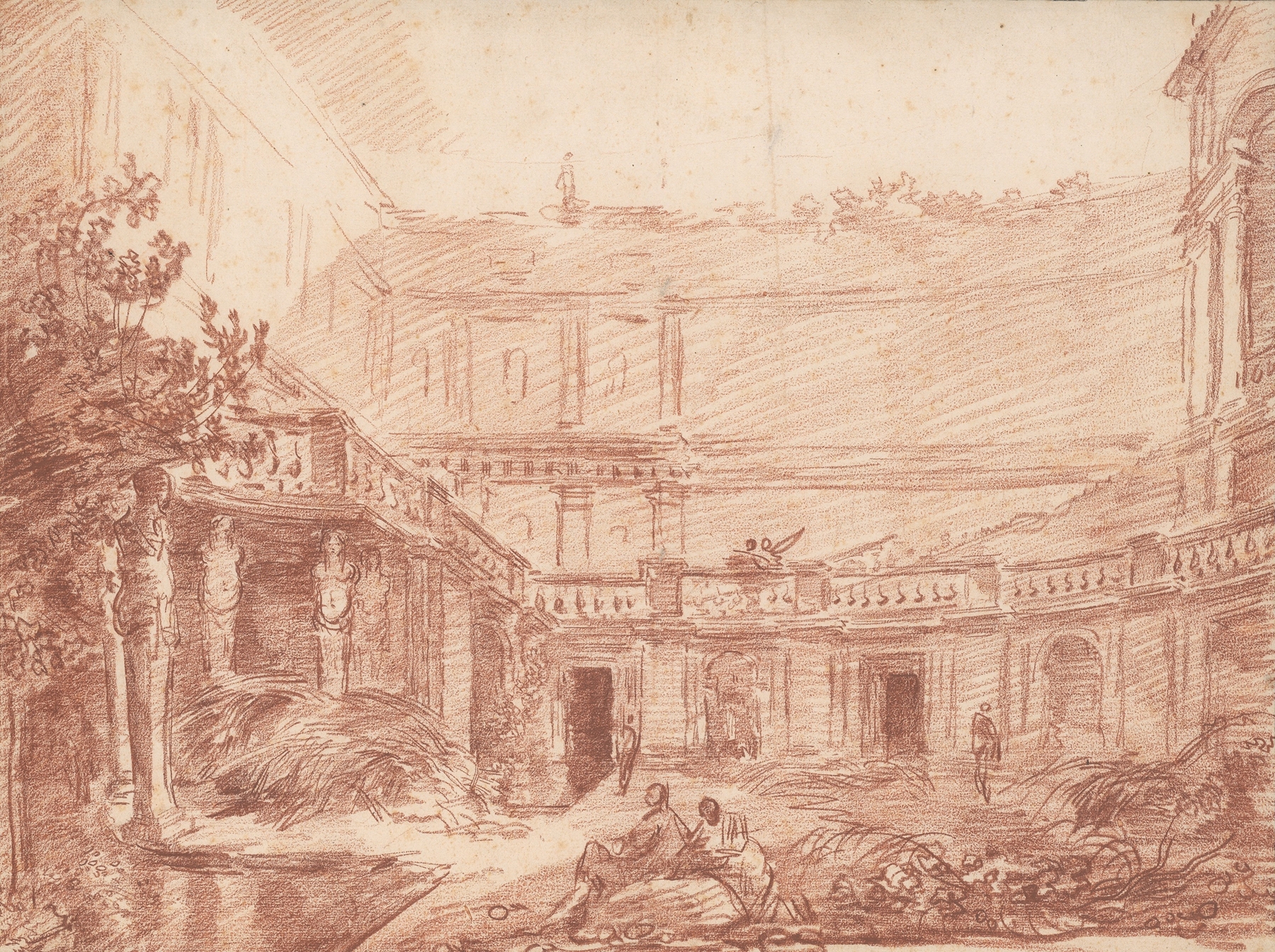
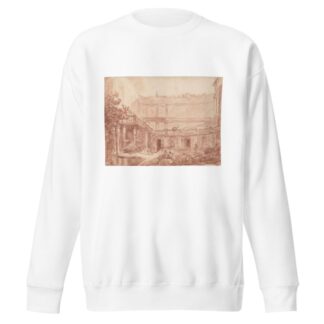
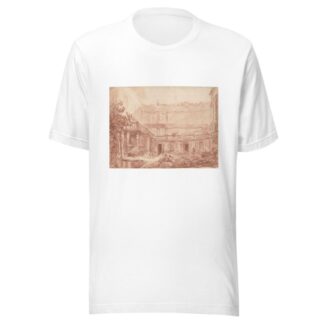
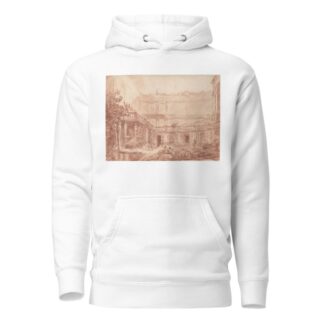
Reviews
There are no reviews yet.